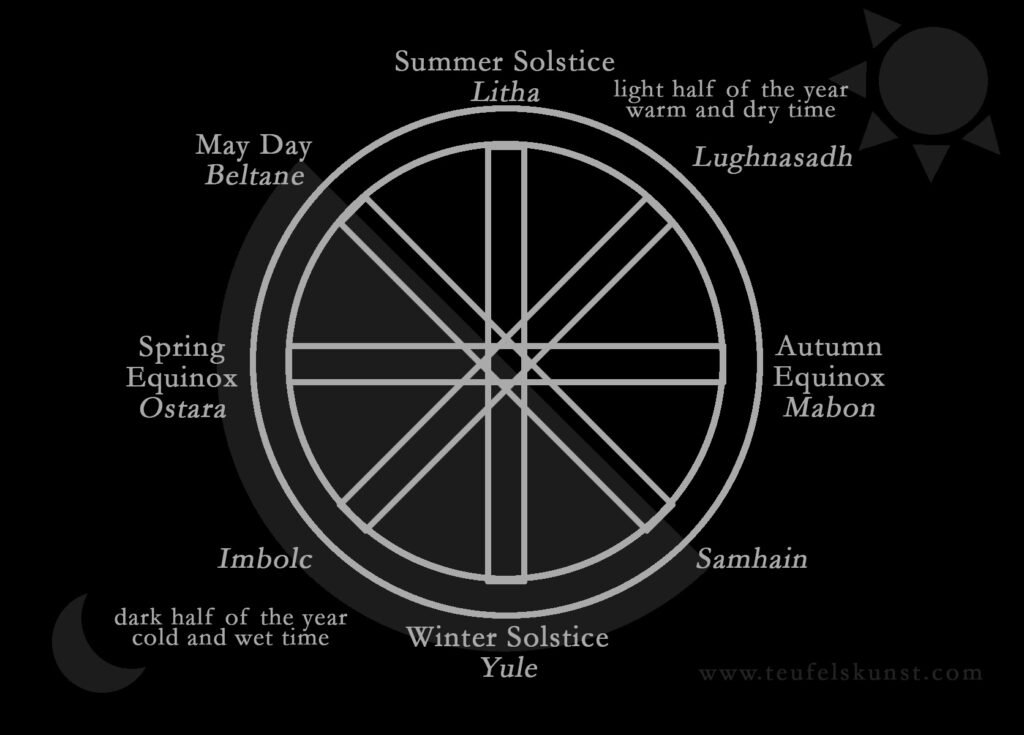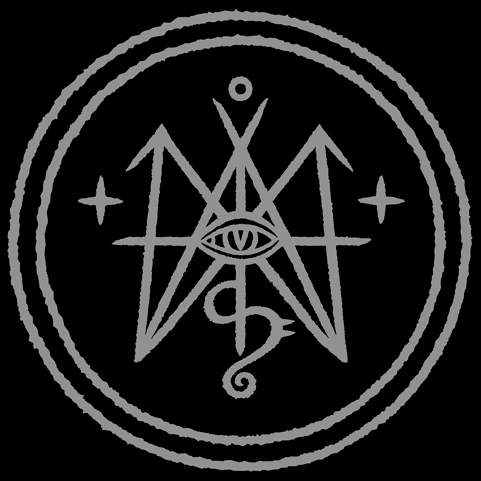
As this year’s circle is about to come to a closure, and with Samhain approaching, I felt inspired to write a summary of my research on the wheel of the year.
The wheel of the year is based on the nature observations of our ancestors. It follows natural cycles* and fixed times, such as the solstices and equinoxes, which devide the annual circle into four quarters. Together they form a solar cross, in which the four arms mark the four seasons – spring, summer, autumn, winter (which are characteristic for Europe, as it was once covered in rainforests resulting in a relatively stable climate). This solar cross can be devided further into four lunar cross-quarter events: Imbolc, Beltane, Lughnasadh and Samhain. These in-between times were considered magical and as doorways to and for the spirits. They fall on the respective full moon of the months of February, May, August and November. For convenience today it is usually on the 1st of these months, when official celebrations of these liminal times take place. The magician may utilize both the full and the new moon, and partake in social activities on the fixed dates.
The celebrations surrounding the solstices are sometimes helt over the cause of 12 sacred nights. The Celts considered Samhain as the beginning of the new year. In Norse religion it is the dark half of the year when the motion of the annual wheel slows down and finally stands still on the winter solstice. It then takes the strength of the golden boar Gullinborsti, who by the end of the Rauhnächte slowly sets the wheel of the year into motion again.
The appearance of the sun cross in Bronze Age religions coincided with the introduction of the spoked wheel. As part of the solar chariot it replaced the solar barge. This sun wheel bears resemblance to the medicine wheel petroforms of native American people as well as the dharmachakra of Indian religions. In his books W.D. Storl refers to it as the European Medicine wheel and links it to our sylvan Celtic origins.
The first appearance of spoked wheels dates to 2000 BCE: Caucasian horsepeople, who travelled with spoked-wheel war chariots deep into the Greek peninsula, joined the mediterranean peoples living there and eventually helped form classical Greece. Celtic people enhanced the spoked wheel with an iron rim in 1000 BCE. Likely, spoked wheels were introduced to China from the West between 2000-1500 BCE.
The horse-drawn chariot, horses and wheels played a special part in Germanic and Slavic divination rituals (hippomancy). They believed their deity rode on the horse or drove the chariot and gave answer through the horses’ behaviour. For example Slavic people would let a blindfolded horse walk in a circle divided by wooden spokes or speersand it was observed whether it stepped on one. The sacred horses (often white, seldom black) were kept seperately.
Apart from being a milestone in the development of humans, the spoked wheel also has connections to deities of weaving and spinning, such as Frau Holle (Dame Hulda), who is the embodiment of an ancient omnipotent earth goddess. Her symbol is the spinning wheel, her sacred herbs and trees open up the realm to the world of the spirits all year round.
©Teufelskunst 2025
October 17, 2025
Posted In: Ritual, News & Site Updates, Incense, Feast Days
Tags: feast days, wheel of the year, dharmachakra, medicine wheel

Leave a Reply